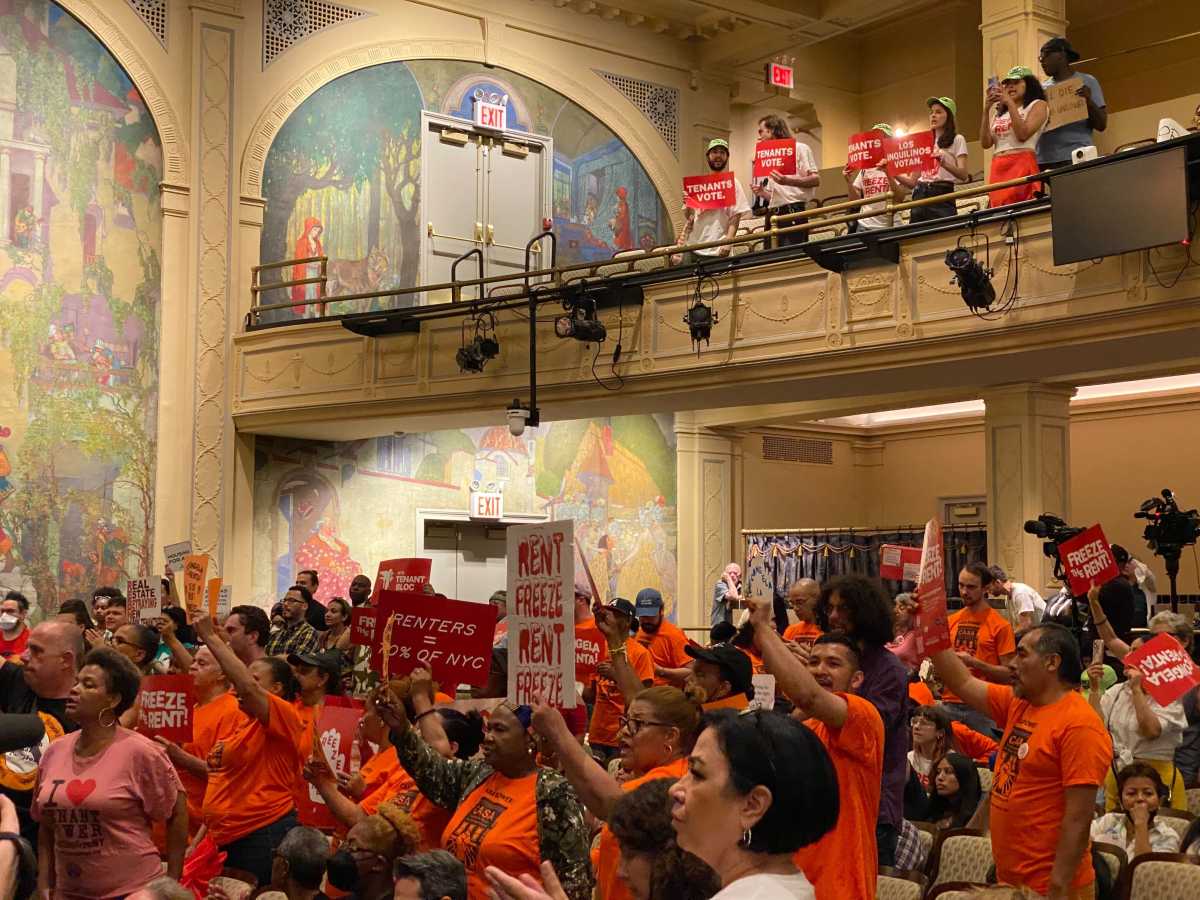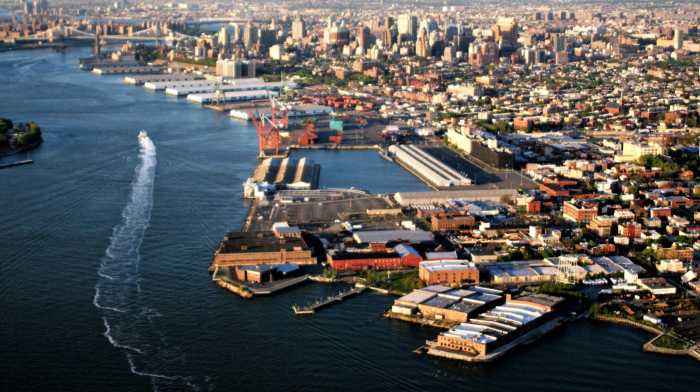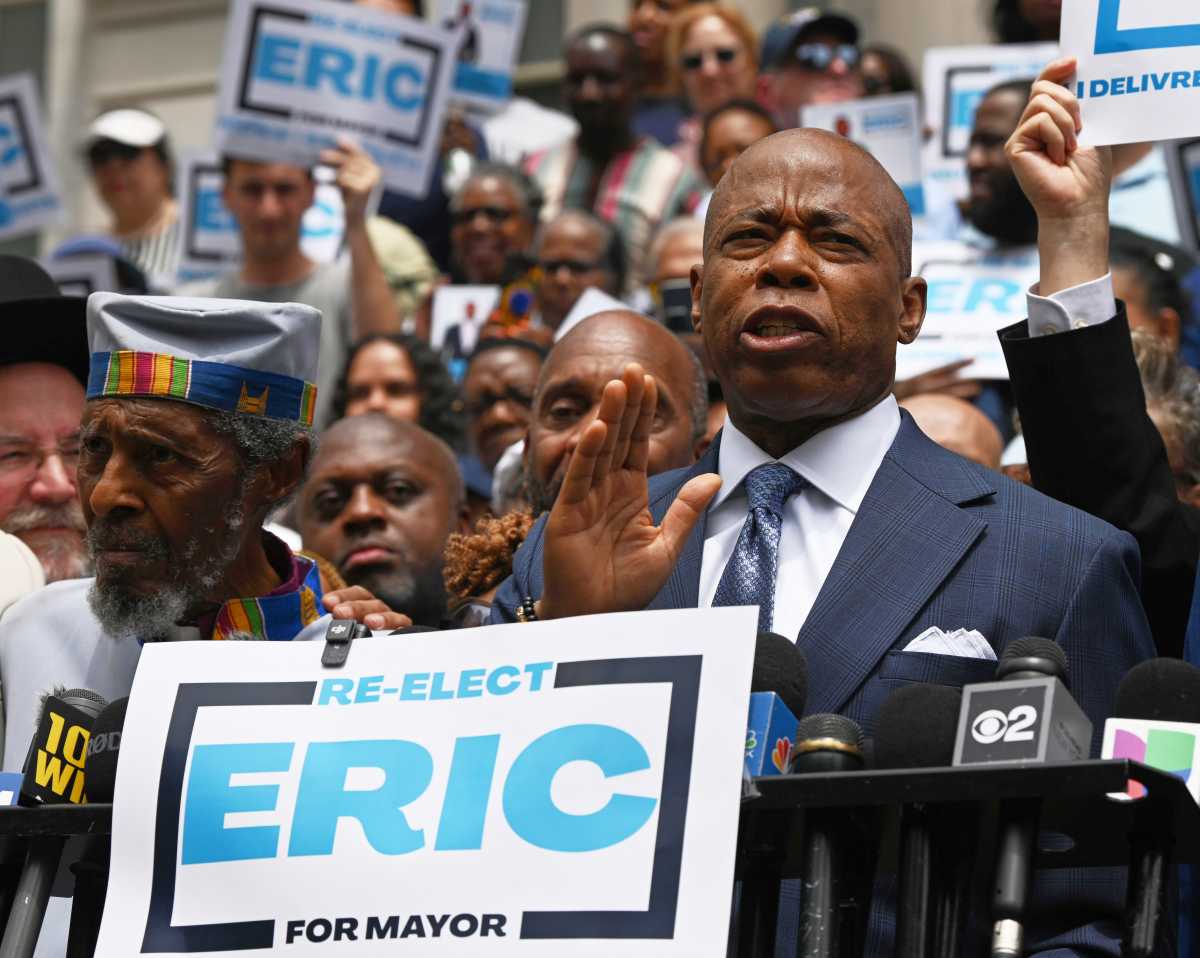We like the mythical
image of our lawmakers in Albany gathering daily in their oak-lined legislative
chambers to heartily debate the weighty issues of the day.
We prefer that to the stark reality — that most of our assemblymembers
and state senators do little but rubber-stamp decisions made by their
chamber’s leadership.
This week, our representatives didn’t even chat before awarding $33-million
in public subsidies for Bruce Ratner’s still-unapproved Atlantic
Yards project. The money, inserted quietly into the $357-million Education,
Labor and Family Assistance budget, is likely only a downpayment on $100
million requested by Ratner now — and the $1 billion dollars or more
that are likely to flow into Ratner’s coffers if his mega-development
proceeds.
As Ariella Cohen’s front-page story
points out, legislators had very little evidence in front of them before
being asked to sign off on the money for Ratner. Mostly, they relied on
a letter that the developer’s lobbyist hand-delivered to legislators
that claimed that Atlantic Yards will be an “economic engine generating
over $6 billion in new tax revenues over the next 30 years.” That
$6-billion figure is based mostly on slanted projections, buck-passing
and cock-eyed optimism.
For example, if Ratner builds Atlantic Yards — with its 8,300 units
of housing, millions of square feet of retail and commercial space, a
basketball arena, a hotel and more than a dozen very-tall towers —
the city and state will be forced to beef up subway and bus service as
well as add police, fire, education and other services (which the Independent
Budget Office estimates could cost New York taxpayers $530 million over
the same 30 years, which is, not surprisingly, $320 million more than
Ratner’s people say it will cost).
Over the years, The Brooklyn Papers has certainly expressed serious reservations
with various parts of the Atlantic Yards plan — which is still evolving.
Like the lawmakers who will eventually be sitting in judgment of the proposal,
we still have not seen an environmental impact statement, final architectural
renderings, legitimate economic projections or even a rebuttal to the
critics who have actually crunched Ratner’s numbers and found them
lacking.
When such documents are presented, perfectly legitimate reasons to support
Atlantic Yards may be found to compete with the critics’ concerns.
But until then, we don’t understand why Albany was in a rush to write
such a big check to Bruce Ratner.
























